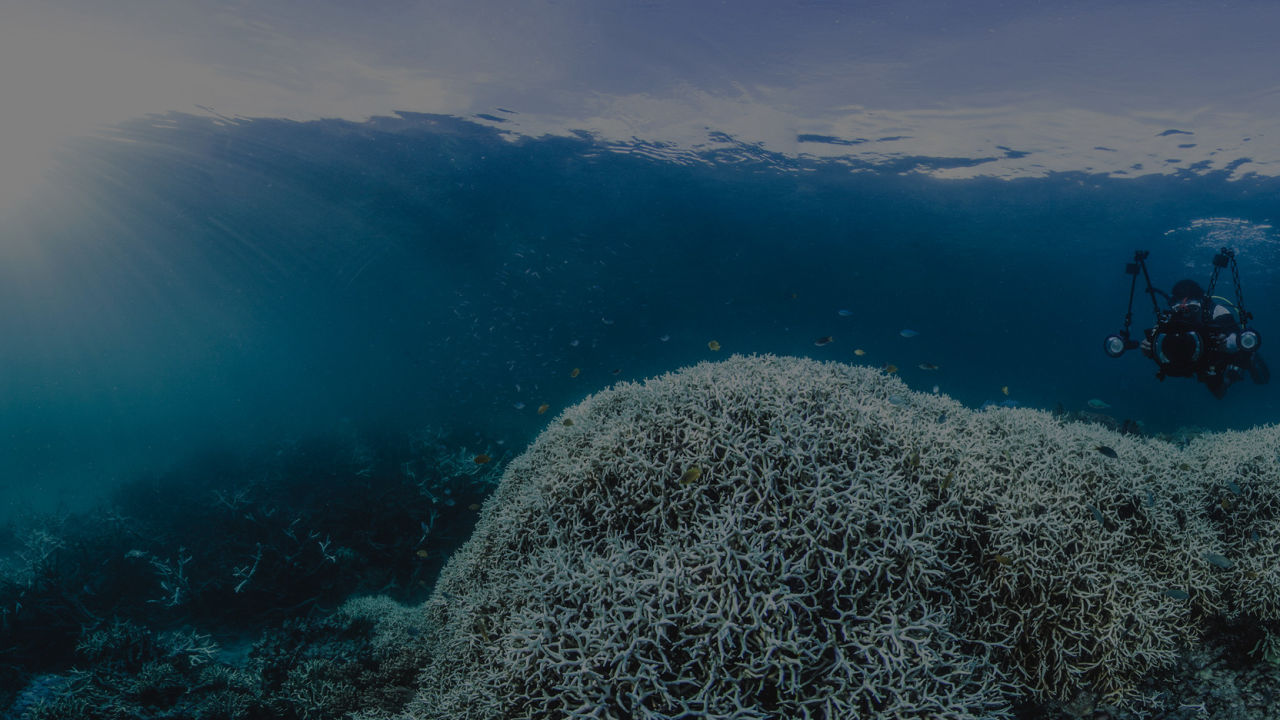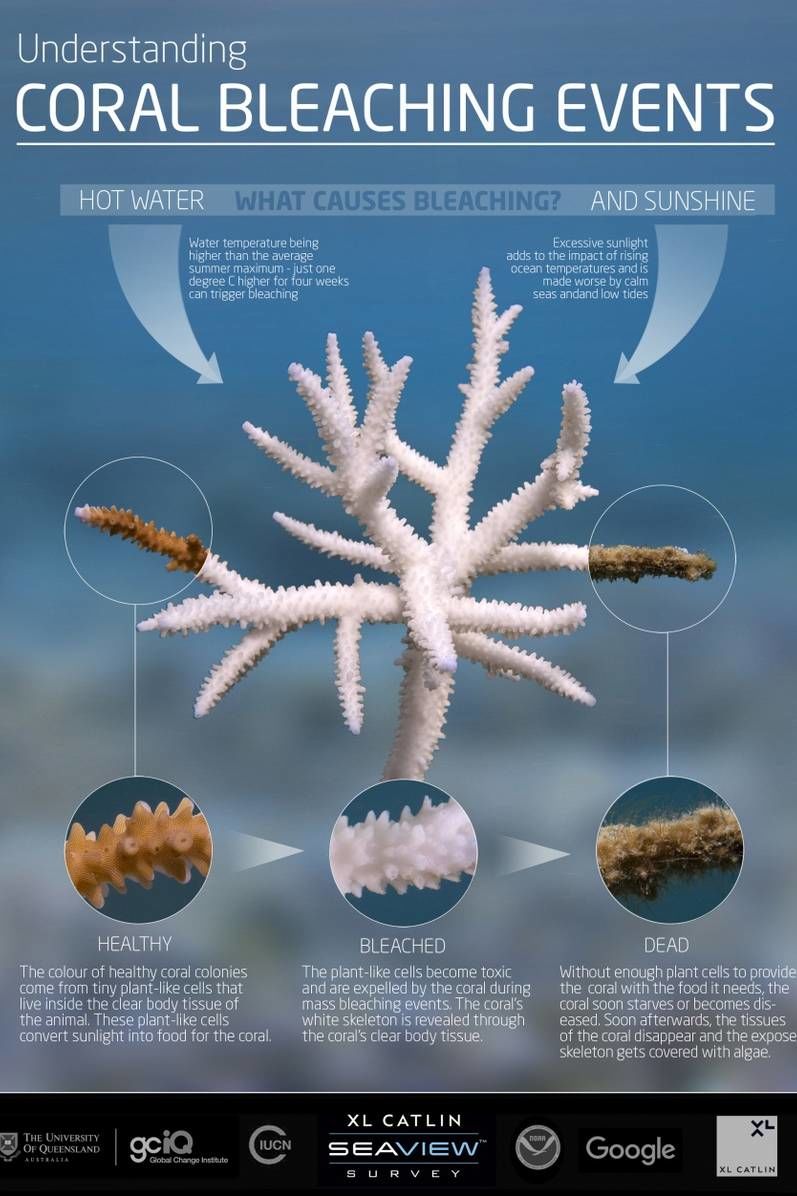News ·
Coral Bleaching
What it is, how it happens, and what we're doing to help.

Photo credit: Underwater Earth / XL Catlin Seaview Survey / Christophe Bailhache
#What is coral bleaching?
The first visible sign that a coral is under stress is a change in colour from its original hue to a brilliant white. Stress causes the living coral animal to expel the tiny marine algae that live inside its tissue. These algae provide the coral with much of its food and colour. Without these algae (called zooxanthellae), the coral tissue appears transparent, revealing the coral’s bright white skeleton.

#Mass bleaching
Biopixel marine biologist Richard Fitzpatrick shows what coral bleaching looks like from the 2017 mass bleaching event
#What causes coral bleaching?
Bleaching occurs when corals are under stress. A primary cause of coral bleaching on the Great Barrier Reef during summer is heat stress resulting from high sea temperatures and increased UV radiation. A temperature increase of just one degree Celsius for only four weeks can trigger bleaching. Deprived of their food source, corals begin to starve once they bleach. If these increased temperatures persist for longer periods (eight weeks or more) corals begin to die. High water temperatures can affect reefs at regional and global scales.
Other stressors that can also cause bleaching include colder temperatures, freshwater inundation (low salinity), and poor water quality from sediment or pollutant run-off.
#Can corals recover from bleaching?
A bleached coral is not dead. Corals can recover from bleaching if heat stress lessens, temperatures reduce, and conditions return to normal. Following previous mass bleaching events recorded on the Great Barrier Reef prior to 2016 and 2017, the vast majority of corals survived. In 1998, 50% of the reefs on the Great Barrier Reef suffered bleaching and in 2002 60% were affected, yet only around 5% of the coral reefs experienced coral mortality on both occasions. Not surprisingly, different corals recover at different rates, eg the fast-growing branching corals are usually the first to bounce back.
Since 2017, there have been promising signs of recovery on reefs locally, however, it is widely accepted that the Reef still needs more time to recover from the unprecedented back to back mass bleaching events in 2016 and 2017.




